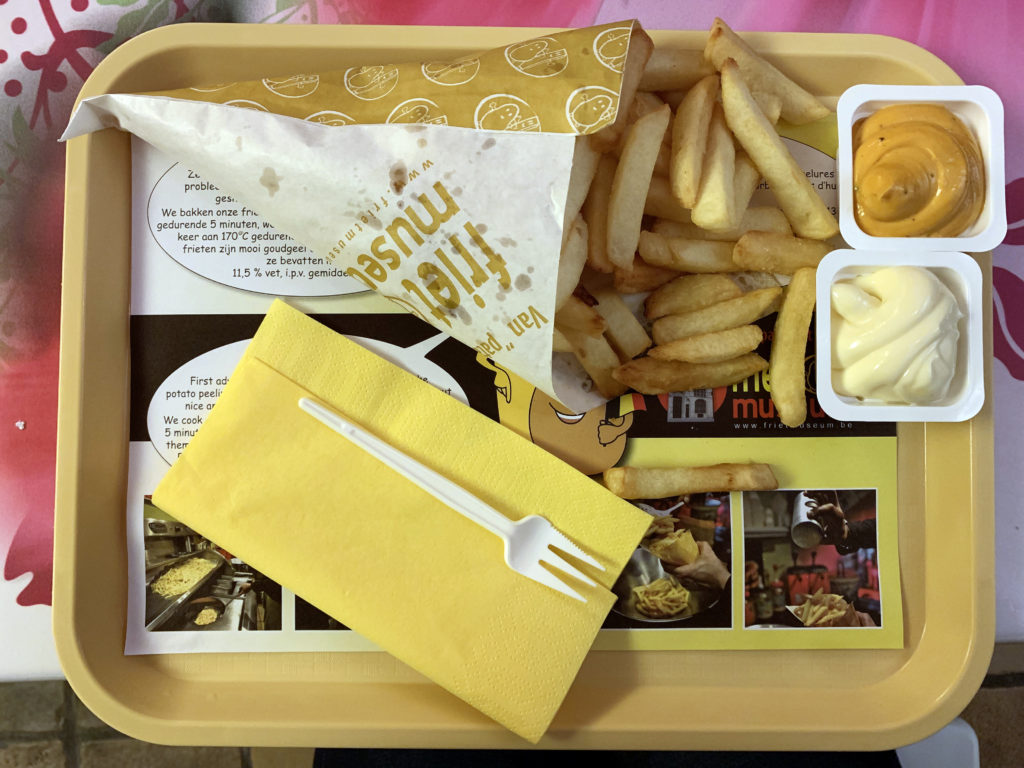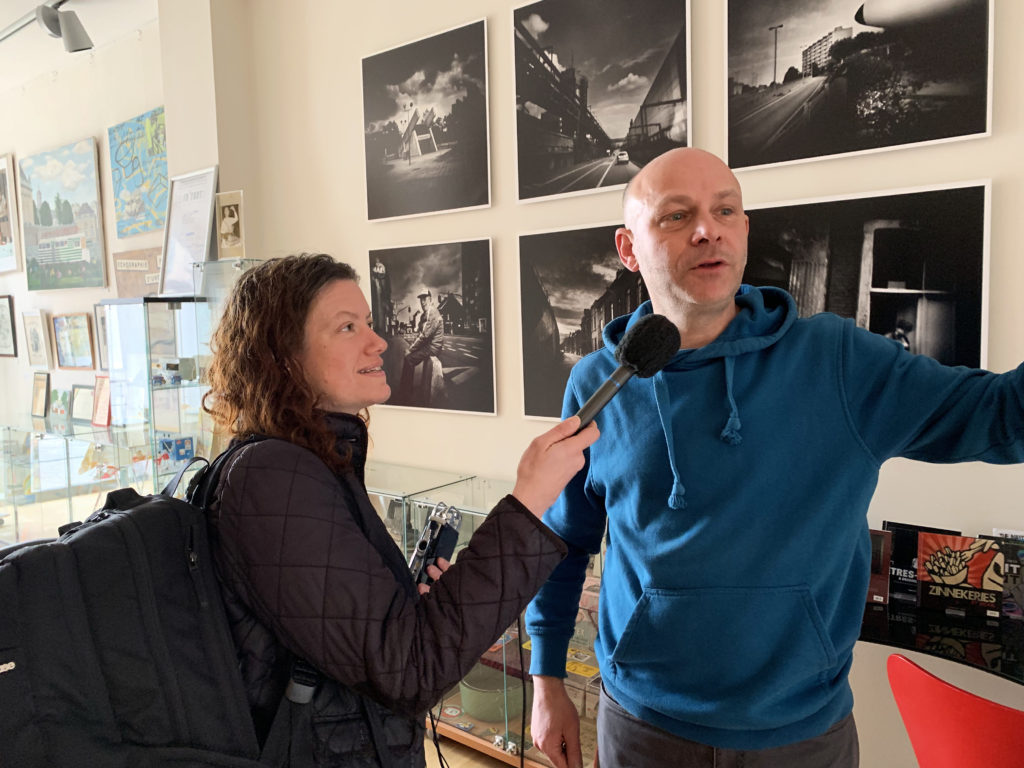Gastropod looks at food through the lens of science and history.
Co-hosts Cynthia Graber and Nicola Twilley serve up a brand new episode every two weeks.
Co-hosts Cynthia Graber and Nicola Twilley serve up a brand new episode every two weeks.
Potatoes were domesticated in what's now Peru approximately ten thousand years ago, but fries—sticks of potato cooked in oil so that a crispy shell surrounds a creamy potato interior—are a European invention. Exactly where and when these crispy delights evolved, however, remains a matter of debate. The Spanish brought potatoes to Europe from their South American colonies in the 1500s, but, although they undoubtedly fried pieces of potato in olive oil, the results wouldn't have been fries as we know them. It took Northern Europeans, with their animal fat-based deep frying, to create the true fry. But which Northern Europeans: the Belgians or the French?
To get to the bottom of this mystery, we travel to Belgium to both visit the world's largest and smallest fry museums—the Frietmuseum, in Bruges, and the Home Frit'Home micro museum, in Brussels. With the help of the museums' founders, Eddy van Belle and Hugues Henri, we examine the evidence—books, engravings, fairground posters, missing letters, and dead journalists—and declare a victor. And then, undaunted, Gastropod wades into another battlefield: the fight for the perfect fry.
 The perfect Belgian fry as served at the Frietmuseum: a Bintje potato fried in beef tallow and served with mayonnaise. Photo by Nicola Twilley.
The perfect Belgian fry as served at the Frietmuseum: a Bintje potato fried in beef tallow and served with mayonnaise. Photo by Nicola Twilley.
Thanks to food scientists, this is a battle that has largely been won. "About fifty, sixty years ago, it would be not unusual to walk into a restaurant and eat a fry that was soggy, doughy, mealy, limp, or very hard," Kantha Shelke, principal at Corvus Blue, a food science and research firm, told us. "You don't get that today. Practically every restaurant has fries that are crisp and deliciously and sensually soft inside."
We go behind the scenes with Shelke, as well as Deborah Dihel, vice president of innovation at Lamb Weston, one of the largest producers of frozen french fries in the U.S., to learn the scientific secrets of that success. We also hear about the failures along the way—from Lamb Weston's fry shape graveyard to Shelke's undercover operation to try to make a certain fast-food restaurant's fries match up to those of their competitor. (Shelke wouldn't reveal the name of either restaurant, but we have an educated guess!)
 A Freedom Fries watch on display at Home Frit'Home. Photo by Nicola Twilley.
A Freedom Fries watch on display at Home Frit'Home. Photo by Nicola Twilley.
Today, however, there's a new challenge facing fry scientists: the rise of delivery. "When you make fresh French fries and you put them in a closed package, you create a little sauna in there," explained Dihel. Dihel's team has spent years fighting soggy delivery fries—one of her colleagues even signed up to be an Uber Eats driver, to better understand the challenge facing fries. Can they deliver a fry that stays crispy all the way from the restaurant to your front door? Listen in to find out!
 Cynthia and Eddy van Belle at the Frietmuseum, Bruges. Photo by Nicola Twilley.
Cynthia and Eddy van Belle at the Frietmuseum, Bruges. Photo by Nicola Twilley.
You can find everything you need to know about Eddy van Belle's Frietmuseum on its website, here. And, if you do get to Bruges for an in-person visit, why not check out van Belle's chocolate museum and lamp collection, too?
 Cynthia and Hugues Henri at Home 'Frit Home. Photo by Nicola Twilley.
Cynthia and Hugues Henri at Home 'Frit Home. Photo by Nicola Twilley.
Hugues Henri's fry micro museum is also an Airbnb lodging, should you wish to fully embrace frite culture on your next visit to Brussels.
Kantha Shelke is principal at Corvus Blue, a food science and research firm, and a regular guest on Gastropod: you can hear her talk to us about the science of jelling agents and plant milks in our Watch it Wiggle and Who Faked My Cheese? episodes.
Deborah Dihel is vice president of innovation at frozen potato company Lamb Weston, where her most recent triumph is the "Crispy on Delivery" project.
Click here for a transcript of the show. Please note that the transcript is provided as a courtesy and may contain errors.